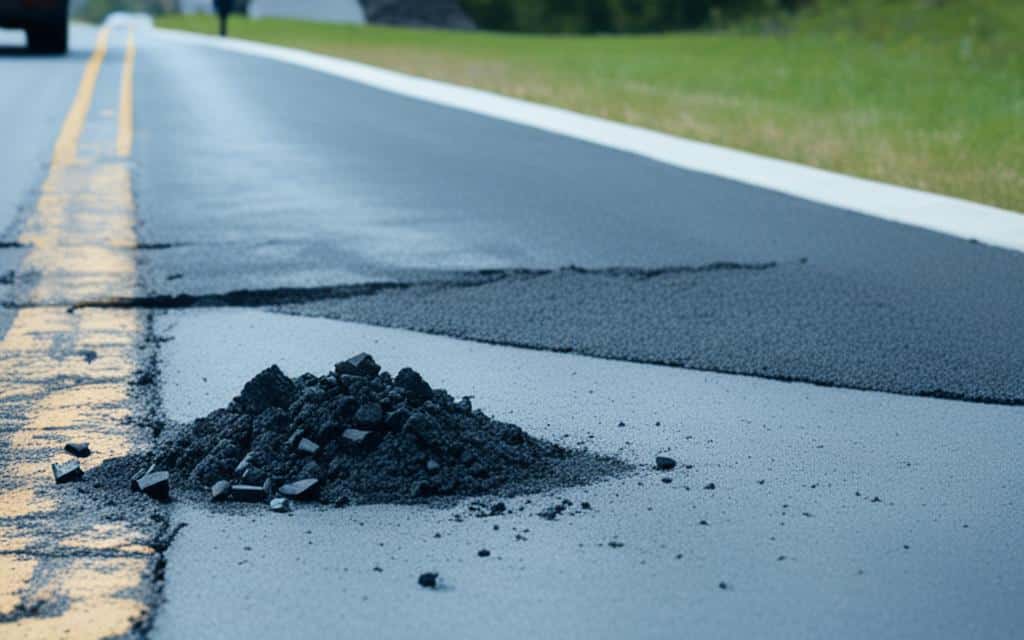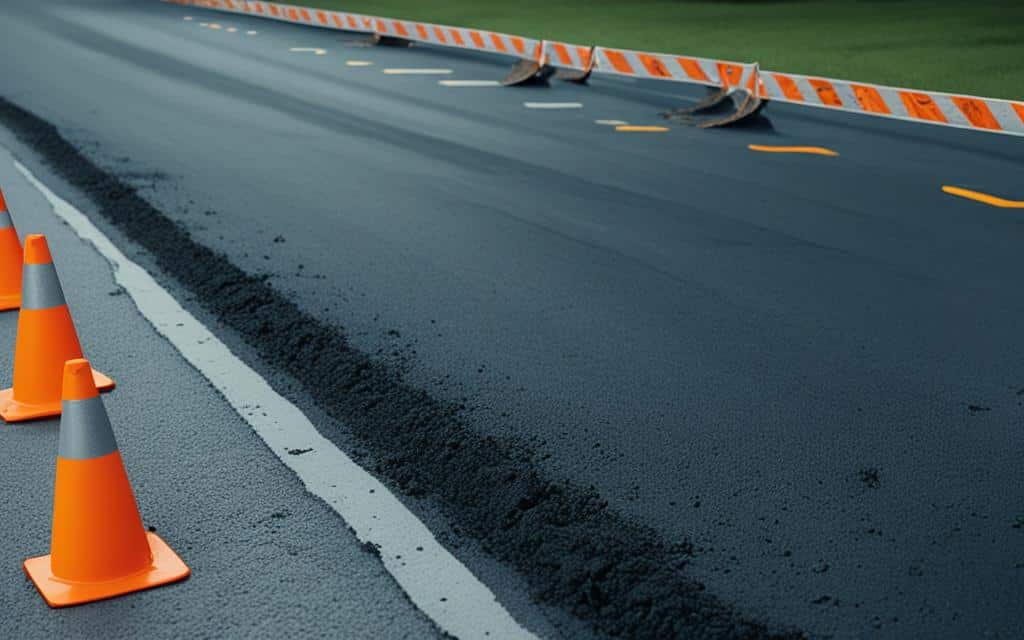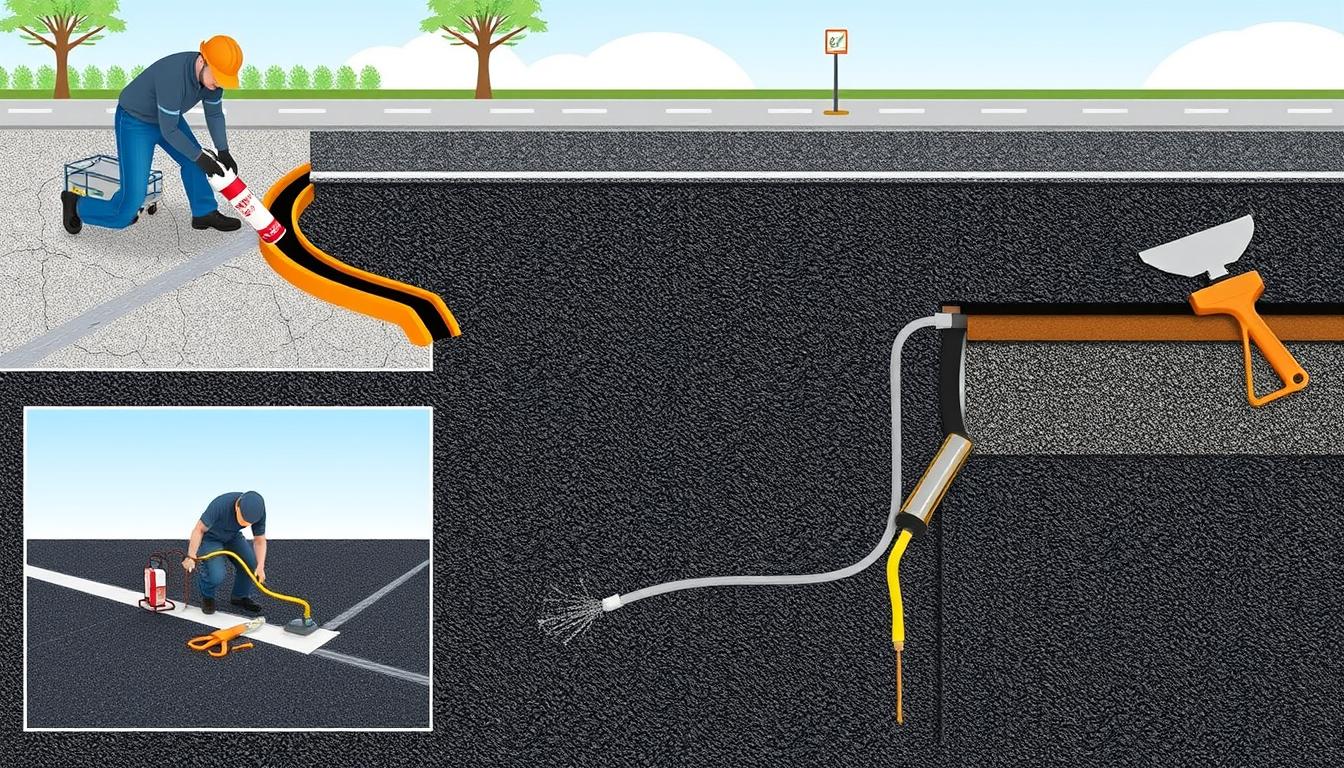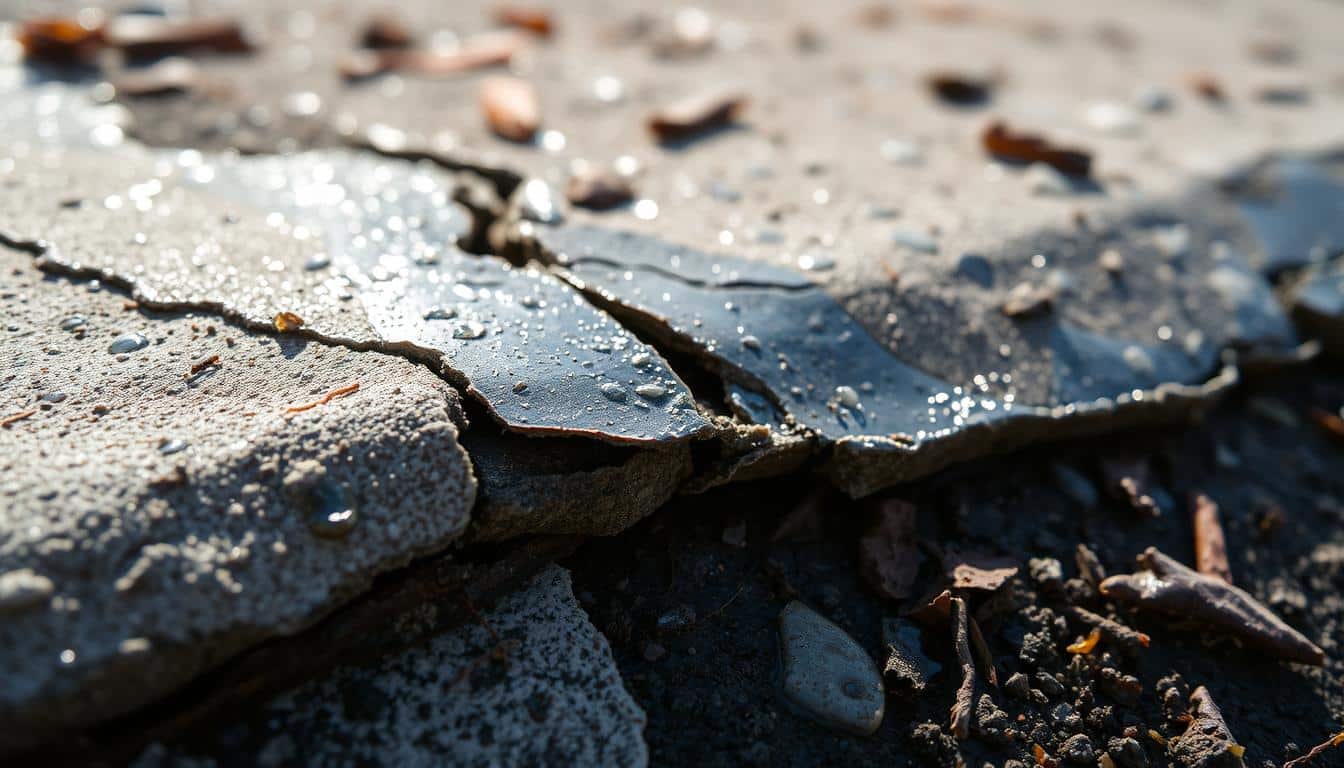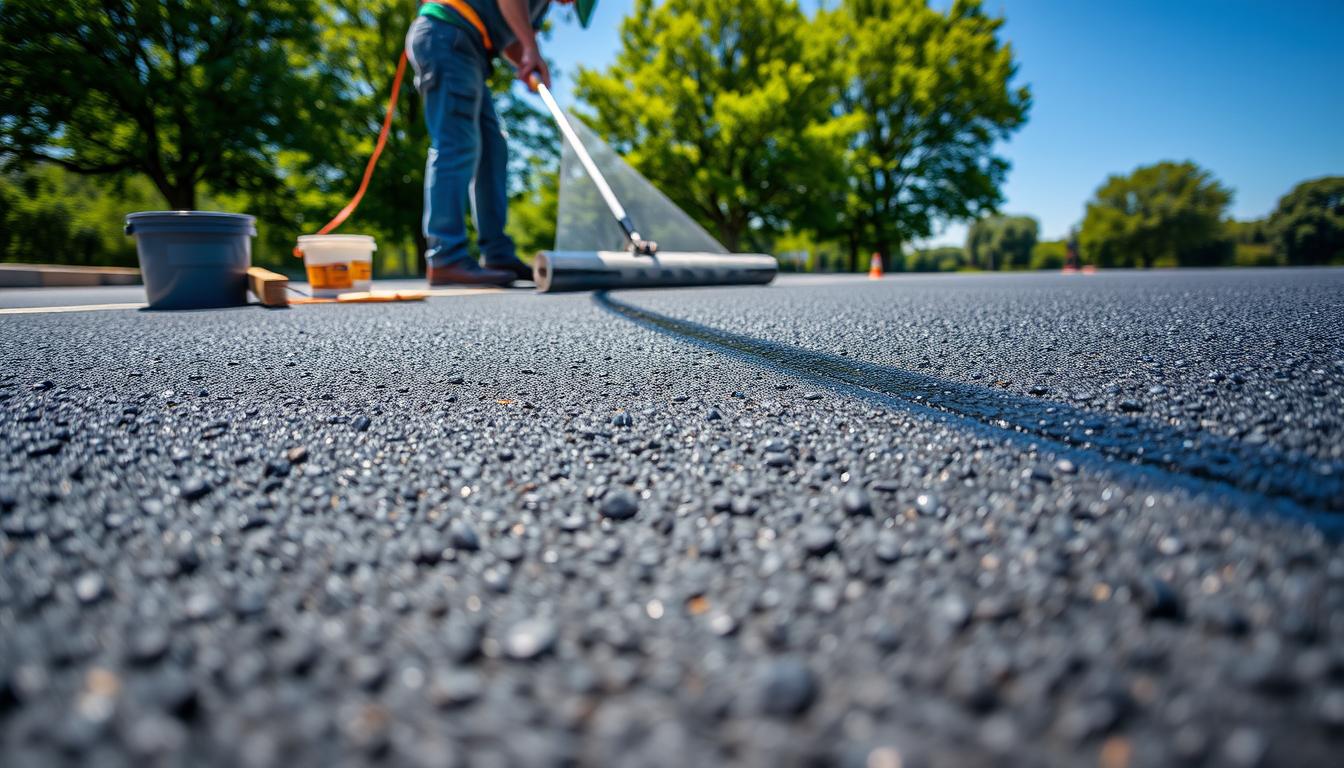Your parking lot or driveway might look pretty bad. You could see cracks, holes, or just a bumpy surface. You might wonder what you can do to fix it. Maybe you need to just patch a few spots or maybe you need a whole new surface. The question is, should I do an asphalt repair or replace?
Choices like topping off, patching, or full replacement have different uses. How you decide depends on the damage and age. Choosing right is essential to make the most of your money and property.”
Is it time for patching or a complete redo? Let’s figure out what’s best for your asphalt. We’ll look at the important factors together. Then, you can make the right choice for your space.
Key Takeaways:
- Asphalt patching is the cheapest option for minor repairs such as small divots, cracks, and holes.
- Asphalt resurfacing can extend the life of asphalt if the foundation is in good condition, there are no deep or wide cracks, the surface is less than 20 years old, and less than a quarter of the surface needs repairs.
- Asphalt paving replacement is the complete overhaul of the surface, usually selected when more than a quarter of the surface needs work, the foundation is unstable, the surface is over 20 years old, there are deep cracks, or there have been several repairs already.
- The cost of asphalt patching is the lowest, followed by resurfacing, and paving replacement is the most expensive option.
- Resurfacing can provide at least ten more years of life to an asphalt driveway.
- Contact HT Paving for all your asphalt needs in San Mateo, CA, and surrounding areas.
Asphalt Repair or Replace: When to Choose Asphalt Patching
Fixing your asphalt quickly can save you money in the long run. Asphalt patching is great for small issues like cracks and holes.
It’s perfect for shallow cracks. It adds new asphalt to smooth out the surface. This method works well for cracks less than a quarter-inch wide.
For bigger problems, dig-out patching is better. This method removes bad asphalt and replaces it with new asphalt. Dig-out patching offers a lasting fix without frequent repairs.
Asphalt patching is cheaper than resurfacing or replacing. It costs about $2 to $3 per square foot. The price depends on the damage and the area size.
But, patched areas might look a bit different. They could have a slightly raised area. Yet, these differences are usually small and don’t affect the driveway’s function.
Choosing to patch up your asphalt is wise. It makes your surface last longer and avoids expensive overhauls. Remember, fixing small issues right away is key for your driveway’s health.
When to Choose Asphalt Resurfacing
If your asphalt is less than 20 years old but damaged, resurfacing might be a good choice. It involves removing the top layer, fixing hidden issues, and then adding a new surface.
This method is more than just covering small damages. It’s a bigger fix that makes your asphalt look better. It can also save you money compared to ripping up your old pavement.
Resurfacing is best if not much of the area is broken and the base is solid. It makes the surface look great again and strengthens it. This means you can wait longer before needing a big replacement.
But your asphalt’s foundation must be in good shape for resurfacing to work well. If your ground has major problems or large cracks, resurfacing might not help. In those situations, replacing the asphalt might be a better idea.
Choosing the right time for resurfacing is important. It’s harder to do in the cold because the asphalt won’t set well. So, it’s best to plan this work for the warmer months when the asphalt can properly bond.
Asphalt resurfacing can cost more than patching but less than a full new surface. It not only fixes issues but also makes your asphalt look better. This means you can enjoy a nicer surface for longer.
To understand more about resurfacing and find the best solution for your situation, talking to an expert is key. A professional can check your surface and recommend the best path. Age, the amount of damage, and the foundation’s condition are all important factors they’ll consider.
When to Choose Asphalt Paving Replacement
If more than a quarter of your asphalt surface needs fixing, consider a replacement. This process includes removing old layers, leveling the ground, and putting down fresh asphalt.
Choosing this option is beneficial for several reasons. It gives your surface a complete makeover. This means it tackles any hidden issues, too. If you take good care of it, a newly paved asphalt can last over 20 years. So, in the end, it’s a smart choice for your wallet.
Yes, it’s pricier than other options. But, the low maintenance and its long life span make it worth the cost. A complete replacement helps fix big problems. You get a new surface that will last for many years without worry.
Contact HT Paving for all your asphalt needs in San Mateo, CA, and surrounding areas.
FAQ
What factors should I consider when choosing between asphalt repair and replacement?
When deciding between repair and replacement, consider the damage size and surface age. Small cracks and holes might need patching. But, if more than a quarter is damaged, it’s time for a new surface.
Think about the foundation’s health and your budget, too. These are important factors.
When should I choose asphalt patching?
Patching is good for small cracks and holes. It involves removing the top layer and adding new asphalt. But, it might not match the rest of the pavement well.
For bigger cracks, dig-out patching is better. Yet, patching can cause bumps.
When should I choose asphalt resurfacing?
Resurfacing is a middle ground between patching and replacing. It’s best if your foundation is solid and the surface is under 20 years old. Also, less than a quarter of the surface needs repair.
It makes your asphalt look new and increases its life. But a bad foundation can lead to more issues.
When should I choose asphalt paving replacement?
If more than a quarter of your surface is damaged, consider replacing it. Full replacement fixes the base and adds a new layer. This gives you a fresh look that lasts about 20 years.
Remember, it’s the most expensive option and needs a solid budget.

